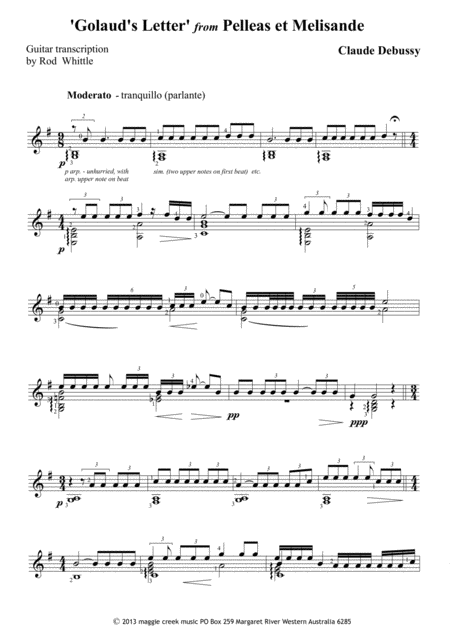Solo Guitar - Level 3 - Digital Download SKU: A0.899117 Composed by Claude Debussy. Arranged by Rod Whittle. 20th Century. Individual part. 2 pages. Maggie Creek Music #25803. Published by Maggie Creek Music (A0.899117). 2 pages; for solo classical guitar; published by Maggie Creek MusicClaude Debussy (1862 – 1918) Debussy’s compositions form part of an art movement known as French Impressionism that evolved in France at the end of the 19th Century. He was its leading musical exponent and a seminal influence on modern music. The aim of Impressionism was to reflect mood, which Debussy did with the use of unusual chords and modes which nevertheless progress unerringly through evocative landscapes to peaks of tension. Careful attention to form gives impalpable sentiments a sense of direction and completion. The excerpt 'Golaud's Letter' from early in Debussy's only opera, the hugely influential ‘Pelleas and Melisande’, demonstrates this, and exhibits his masterful expression of mood and drama. Exquisite without being flowery, forceful but not overblown, the Letter's spoken voice recitative style is a natural accompaniment to the Letter's contents, while it accentuates the arrival of cadences.
